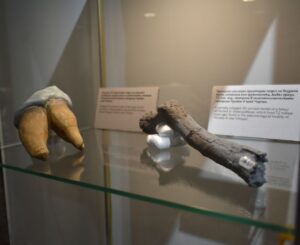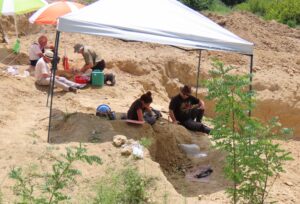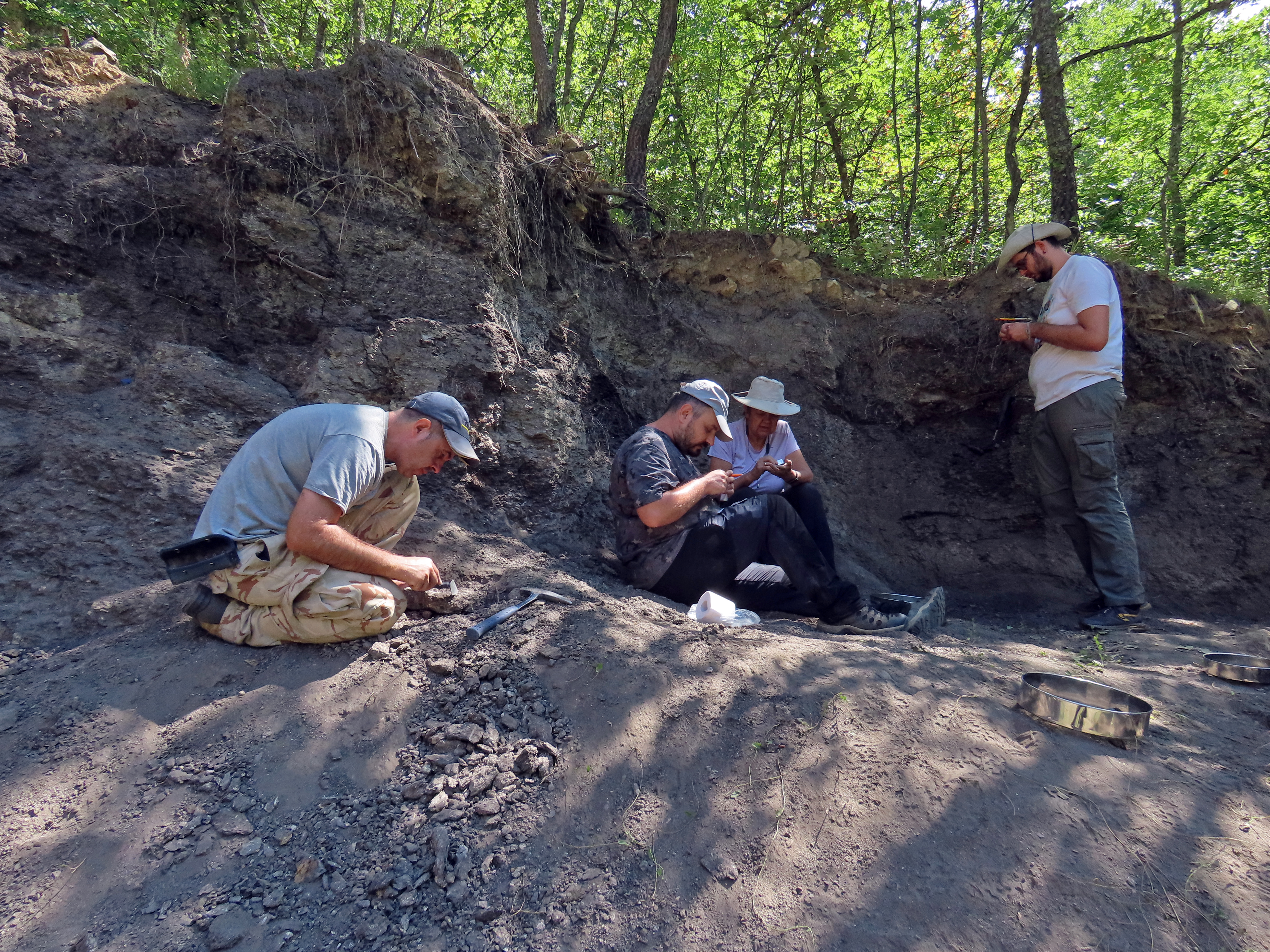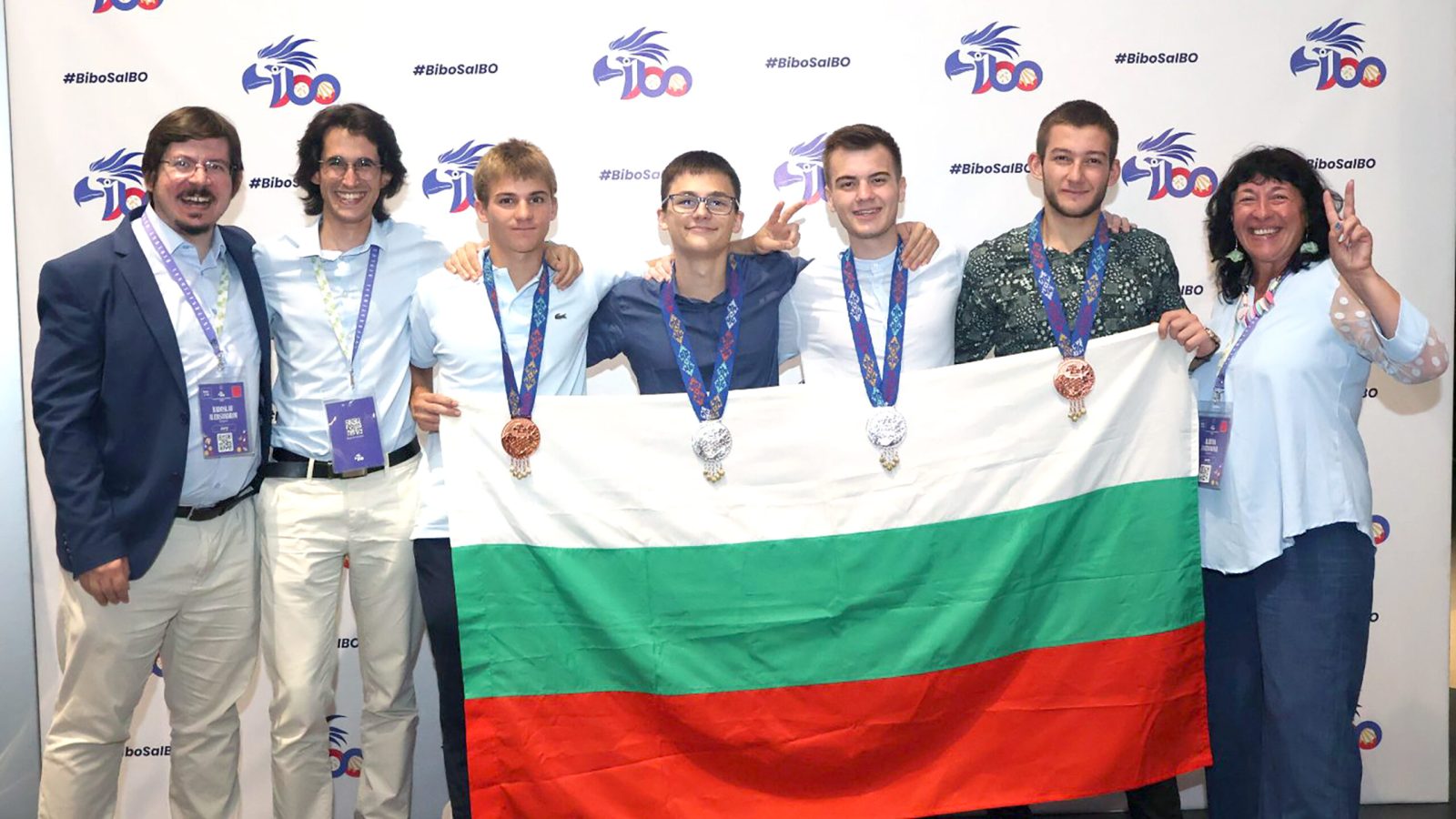The excavations of the palaeontological team of the National Museum of Natural History (NMNHS-BAS) in the Late Miocene Azmaka trove (Chirpan region), led by Prof. Nikolai Spassov, have aroused particular international interest in connection with the discovery of a hominid femur bone (a fossil member of the human family) dated 7.2 million years ago. After the publication in 2012 of a hominid tooth found in the same trove, this is the second find discovered by the team. The femur, presumably attributed to the hominid Graecopithecus described by a mandible found during World War II near Athens, has important implications for palaeoanthropology. It provides an opportunity to study the mode of locomotion of this latest European pre-human hominid. The now completed study (in print) shows extremely interesting results related to the beginning of human evolution.
The famous palaeoanthropologist Prof. David Begun from the University of Toronto has been working in the NMNHS-BAS team for three years. At the beginning of August this year. the National Museum of Natural History at BAS signed a memorandum with the Max Planck Institute for Evolutionary Anthropology in Leipzig, according to which the German institute will finance over the next three years the excavations of the NMNHS-BAS in the search for hominid fossils in the Late Miocene of Bulgaria and also in the Republic of North Macedonia, together with a team from the Museum of Natural History of North Macedonia in Skopje. The first excavations started in September this year.

Enlarged models of the tooth and the femur bone of a hominid found in the palaeontological locality of Azmaka (Chirpan region), aged 7.2 million years, presented in the exposition of NMNHS-BAS opened at the end of 2024 (and still existing) in the “Dimitar Kovachev” palaeontological branch of NMNHS-BAS in Asenovgrad






